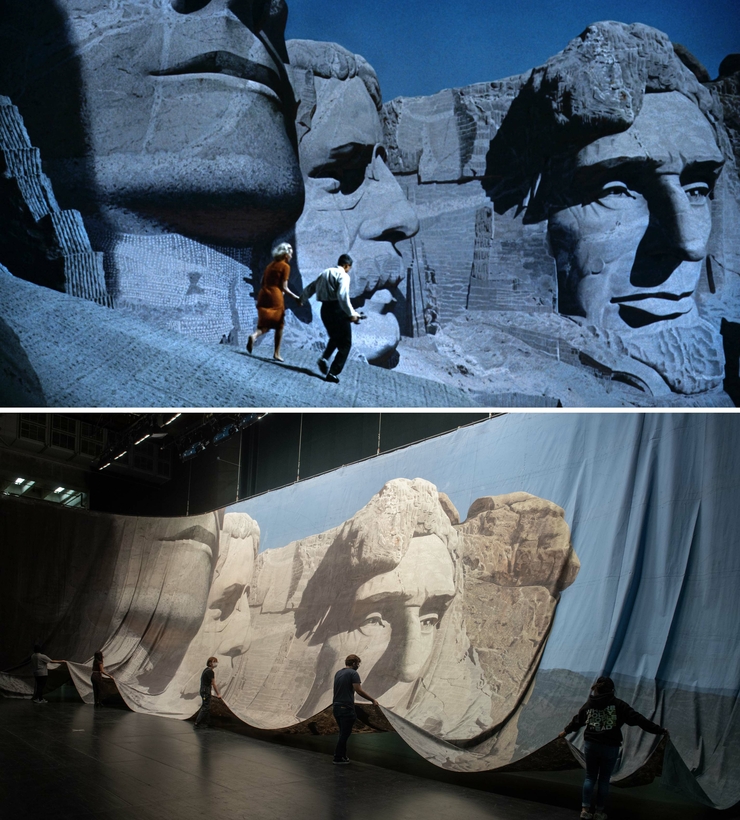Remember the opening of The Sound of Music? That idyllic Austrian meadow, Alps in the background, in which Julie Andrews twirls? “The hills are alive,” she sings. Actually, they weren’t. As with so many of the striking locations in Hollywood movies, from Singin’ in the Rain to Cleopatra, a flat canvas held those hills. For the first museum show dedicated to Hollywood’s backdrops, the Boca Raton Museum of Art has rounded up canvases made between 1938 and 1968—22 in all. They mostly come from movies by MGM, titles such as Marie Antoinette (1938), An American in Paris (1951), and Two Weeks in Another Town (1962). The exhibition also features “the grandaddy, the Babe Ruth of all Hollywood backdrops,” as Karen Maness, one of the show’s curators, describes it: Mount Rushmore, where Alfred Hitchcock, in his 1959 thriller, North by Northwest, staged his precarious penultimate scene.


The film stars Cary Grant as Roger Thornhill, an advertising executive who’s been mistaken for a spy and must outwit the thugs who are trying to kill him. To clear his name, Thornhill chases down the actual target, a hunt that takes him from New York City to South Dakota. Which leads to Mount Rushmore, where the beautiful blonde he’s picked up on his way west ends up dangling under Thomas Jefferson’s chin.
Hitchcock had a permit to film on the immortalized heads of these four presidents. But, as legend has it, once government officials heard the scene involved a fight and two deaths, they banned the production. Hitchcock used long shots of the real Mount Rushmore in the film, but for the chase on the stone faces, he had a 91-foot canvas painted. Several hands worked on it, and, as was often the case, the full list of artists remains unknown. For filmmakers, the word “backdrop” had “back” in it for a reason. The canvases were a small part of a larger piece of art, considered insignificant on their own.
Viewers should remember that these backdrops were created for the camera’s lens, not a spectator’s eyes. Hanging in the museum, they may look warped, the faces of Abraham Lincoln and Theodore Roosevelt a bit distorted. But selfies taken in front of the canvases will look as the artists meant them to—real! —Jensen Davis
“Art of the Hollywood Backdrop: Cinema’s Creative Legacy” is on at the Boca Raton Museum of Art through January 22, 2023
Jensen Davis is an Associate Editor for AIR MAIL


 Discover
Discover